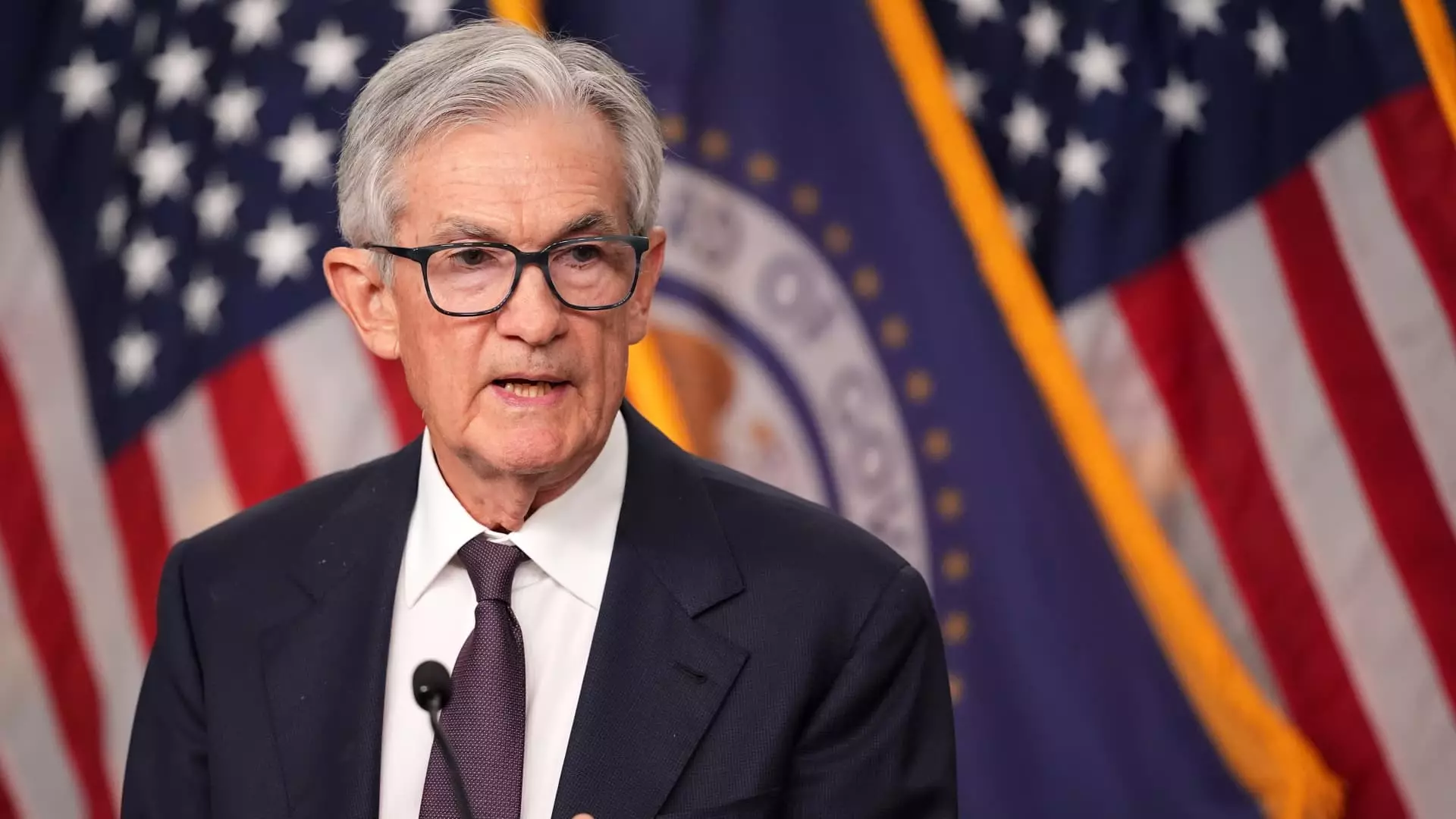The recent discussions among Federal Reserve officials unveiled a deeply concerning reality: the economic landscape is fraught with uncertainty, exacerbated by erratic trade policies and rising inflation. The minutes from the May Federal Open Market Committee meeting reveal a hesitant approach to interest rate adjustments, underlining the potential chokehold that tariffs could place on inflation and broader economic stability. In an era marked by volatile fiscal actions and trade disputes, the Reserve stands at a precarious juncture, balancing the dual mandates of fostering employment while keeping inflation in check.
Recent reports indicate that the economic outlook is increasingly muddled. The Fed has found itself in a position where every decision feels like stepping onto a tightrope stretched over a pit of uncertainty. It’s no longer merely a question of managing monetary policy but grappling with external pressures that could dictate the nation’s economic future. This situation is exacerbated by rising trade tensions, particularly with China, which have not only strained diplomatic relations but also clouded market expectations about growth and stability.
Interest Rates: A Dilemma of Decision
Amidst this turmoil, the decision to maintain the federal funds rate in a holding pattern between 4.25%-4.5% reflects a cautious approach that feels more reactionary than strategic. Federal officials are trapped in a cycle of indecisiveness, torn between the need to control inflation and the potential for dampened economic growth. The dangers of inflation are real and pressing, yet the Fed seems hesitant to take drastic measures that could destabilize an economy that some claim is performing “solidly.” The denial of imminent action only serves to prolong a state of economic limbo that can stifle growth in the long run.
Moreover, the firm stance by Fed Chair Jerome Powell against political influence highlights an essential yet troubling reality of central banking in the United States. While independence from political pressures is crucial for effective policymaking, Powell’s refusal to respond to mounting calls for rate cuts amid trade negotiations risks alienating stakeholders who are feeling the crunch of inflation. It’s a reminder that even in the government’s most economic-centric decisions, politics and practicality are often intertwined in inextricable ways.
Trade Uncertainty: A Catalyst for Chaos
The rollercoaster of tariffs and trade negotiations serves as a constant reminder of how global dynamics can upend economic stability. Just days after the Fed’s meeting, news of an agreement to pause the imposition of onerous tariffs between the U.S. and China ignited temporary optimism in the markets. This reaction, however, feels superficial, given that the underlying issues remain unresolved; it perpetuates a cycle of volatility that could rear its head again at any moment. Instead of palliative measures, what our economy requires is a cohesive and transparent trade policy that reassures businesses and consumers alike. Without it, the economic growth we see today may weaken or vanish tomorrow.
The impulse to quicken economic recovery efforts through rate cuts is understandable, yet it is critical to recognize when such measures could lead to longer-term inflationary pressures. Policymakers need to move past myopic views on fixing immediate issues and embrace a more comprehensive approach that considers the lasting impacts of their decisions. The lessons learned from the aftermath of the 2008 financial crisis impart a vital perspective: managing inflation while simultaneously fostering recovery is not merely a balancing act—it’s an intricate dance that demands foresight, transparency, and strategic acuity.
The Path Forward: Rethinking Monetary Strategies
As the Fed contemplates their five-year policy framework, the concept of “flexible average inflation targeting” needs further scrutiny. The aspiration to allow inflation to exceed the 2% target for the sake of more inclusive labor market improvements could backfire if the economic environment shifts dramatically. In the current climate, where inflationary shocks loom large, such a strategy could precipitate dire consequences for an agency already struggling to navigate a treacherous economic terrain.
The Federal Reserve’s path forward calls for an attitude of adaptability and an escape from rigid frameworks. It must deliberately forge policies that can withstand an array of challenging economic environments, especially when inflation and uncertainty remain prevalent. The stakes are high, and the consequences of misplaced priorities are profound. A robust and resilient economic policy is not merely a preference; it is an urgent necessity.



Leave a Reply